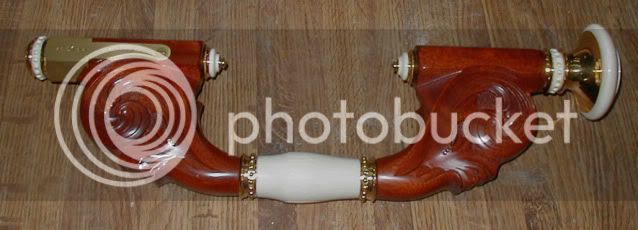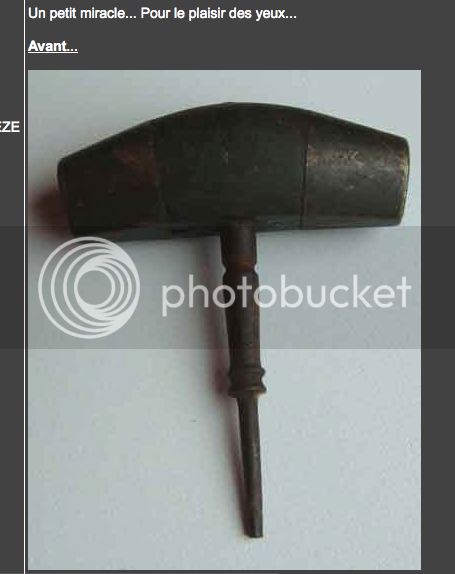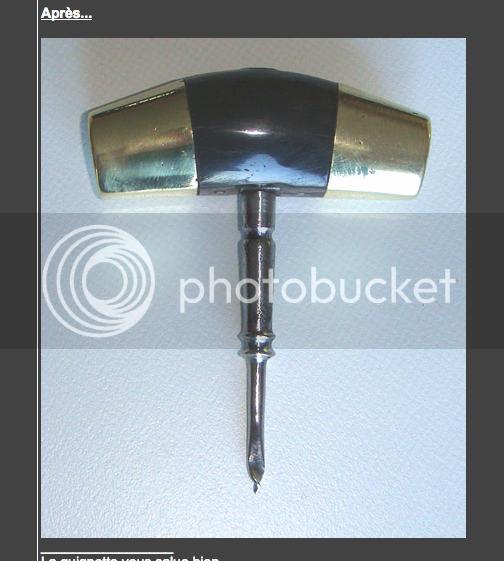I just bought some more moulding planes. Some would wonder if I need them, but these are all quite different from the ones I already have - they are French:

- which makes them instantly different and interesting.
There are some distinctive design features - look at the bed angle on these two (admittedly reduced a bit by skewing the iron):

They were all owned by the same person, and are all the same make - here's the trademark:

They are all in a dense wood resembling walnut, and the irons are heavy and look like good steel - presumably the selling point of the brand was the use of Swedish steel (from the "mines de Suede").
The only on-line reference I have found was to someone selling a catalogue on French ebay, which confirms the maker was active in Paris in 1898:

I can comment on whether they are any good or not when I've removed the top layer of dirt and a bit of rust.
Does anyone know any more about these? Were they a premium brand? Waht is the wood? Are there any French websites or forums like this? Most resources that I know of are UK or American. Over to you!

- which makes them instantly different and interesting.
There are some distinctive design features - look at the bed angle on these two (admittedly reduced a bit by skewing the iron):

They were all owned by the same person, and are all the same make - here's the trademark:

They are all in a dense wood resembling walnut, and the irons are heavy and look like good steel - presumably the selling point of the brand was the use of Swedish steel (from the "mines de Suede").
The only on-line reference I have found was to someone selling a catalogue on French ebay, which confirms the maker was active in Paris in 1898:

I can comment on whether they are any good or not when I've removed the top layer of dirt and a bit of rust.
Does anyone know any more about these? Were they a premium brand? Waht is the wood? Are there any French websites or forums like this? Most resources that I know of are UK or American. Over to you!









